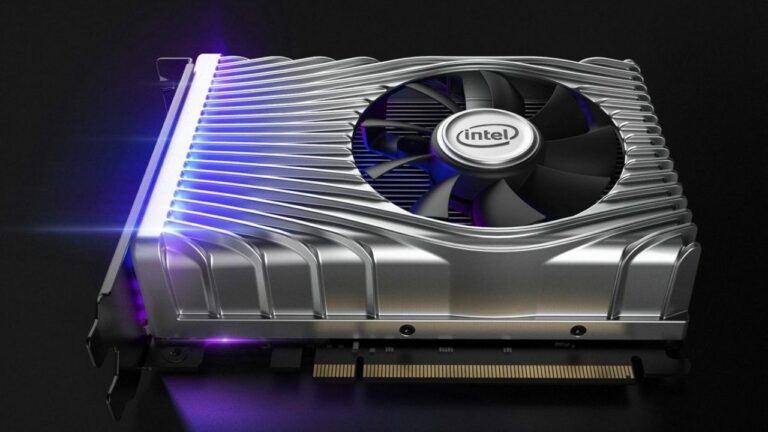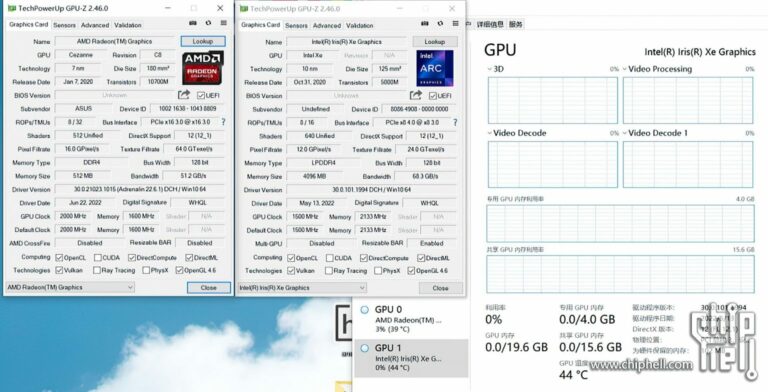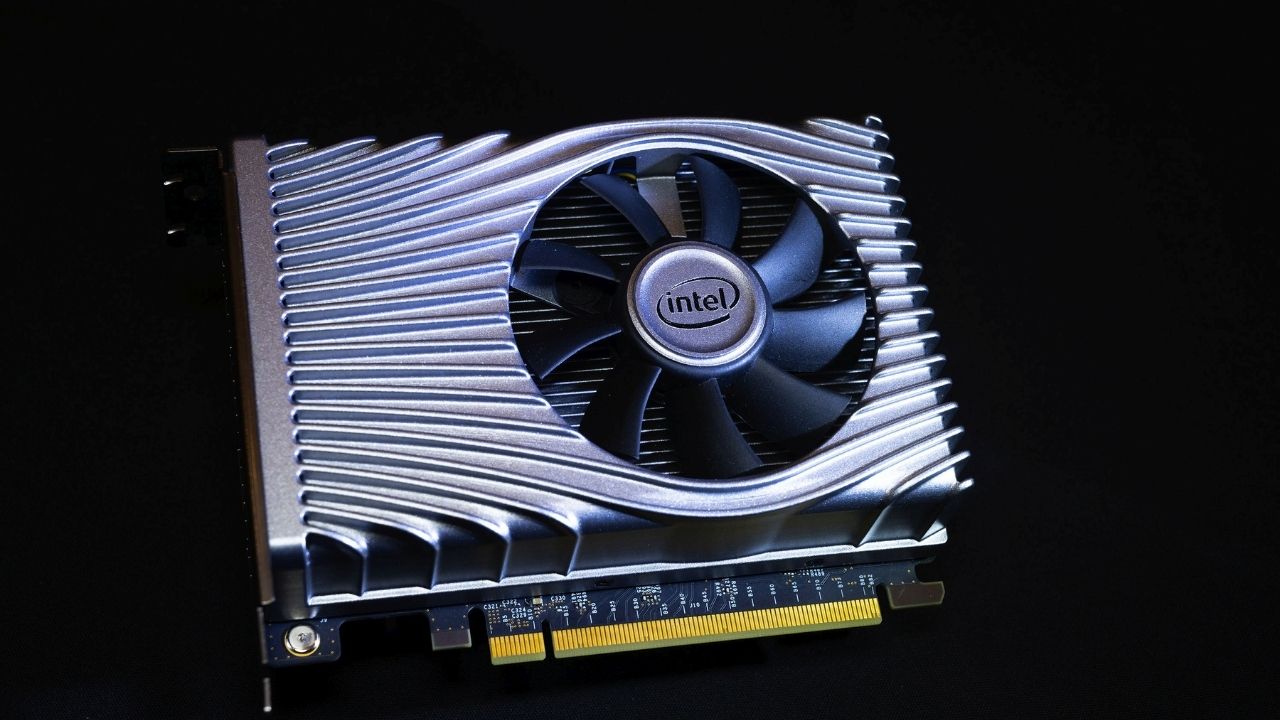Chiphell user @Misaka_9993 bought an Intel DG1 discrete GPU to try it out on an AMD motherboard. However, despite its remarkable encoding and decoding capabilities, it was not their first choice. The user had initially wanted the next-gen DG2 graphics card but opted out of it because of high pricing.
Mikasa used the GUNNIR DG1 GPU with 80 EUs for the test. Mikasa used the AMD Ryzen 7 5700G integrated Vega 8 GPU to boot up a system on an ASUS ROG STRIX X570-I motherboard. The UEFI and CSM settings were disabled, so the system booted from the integrated GPU. However, the DG1 HDMI port still delivered the output signal.

The DG1 is the first custom graphics card based on Intel’s Xe architecture launched in 2021. The card features Iris Xe or Iris Xe Index V2; both are toned-down versions of the Xe-LP-based DG1 GPU.
The window lists the specs for the GPUs– AMD Cezanne’s Vega on the left and Intel’s DG1 Iris Xe on the right.

While the DG1 is mediocre in terms of gaming, its media decoding abilities make up for the losses. It is comparatively slower than AMD Vega because the DG1 supports eight lanes of PCIe Gen4 while the Ryzen 7 5700G only supports 16 lanes of PCIe Gen3. Hence, the maximum bandwidth is limited to 8 lanes.

Intel’s DG1 was the first modern discrete GPU. Its successor, the Alchemist DG2-128, is gathering all the hype as it is based on the Arc A380 desktop GPU, and we know how Intel performed on that one!
About Intel
Intel Corporation is an American multinational corporation and technology company headquartered in Santa Clara, California, in Silicon Valley. It is the world’s largest semiconductor chip manufacturer on the basis of revenue, and is the developer of the x86 series of microprocessors – the processors found in most personal computers (PCs).
Incorporated in Delaware, Intel ranked No. 46 in the 2018 Fortune 500 list of the largest United States corporations by total revenue.









No Comments on Chiphell User Tests Intel’s DG1 GPU on AMD Ryzen 7 5700G Motherboard